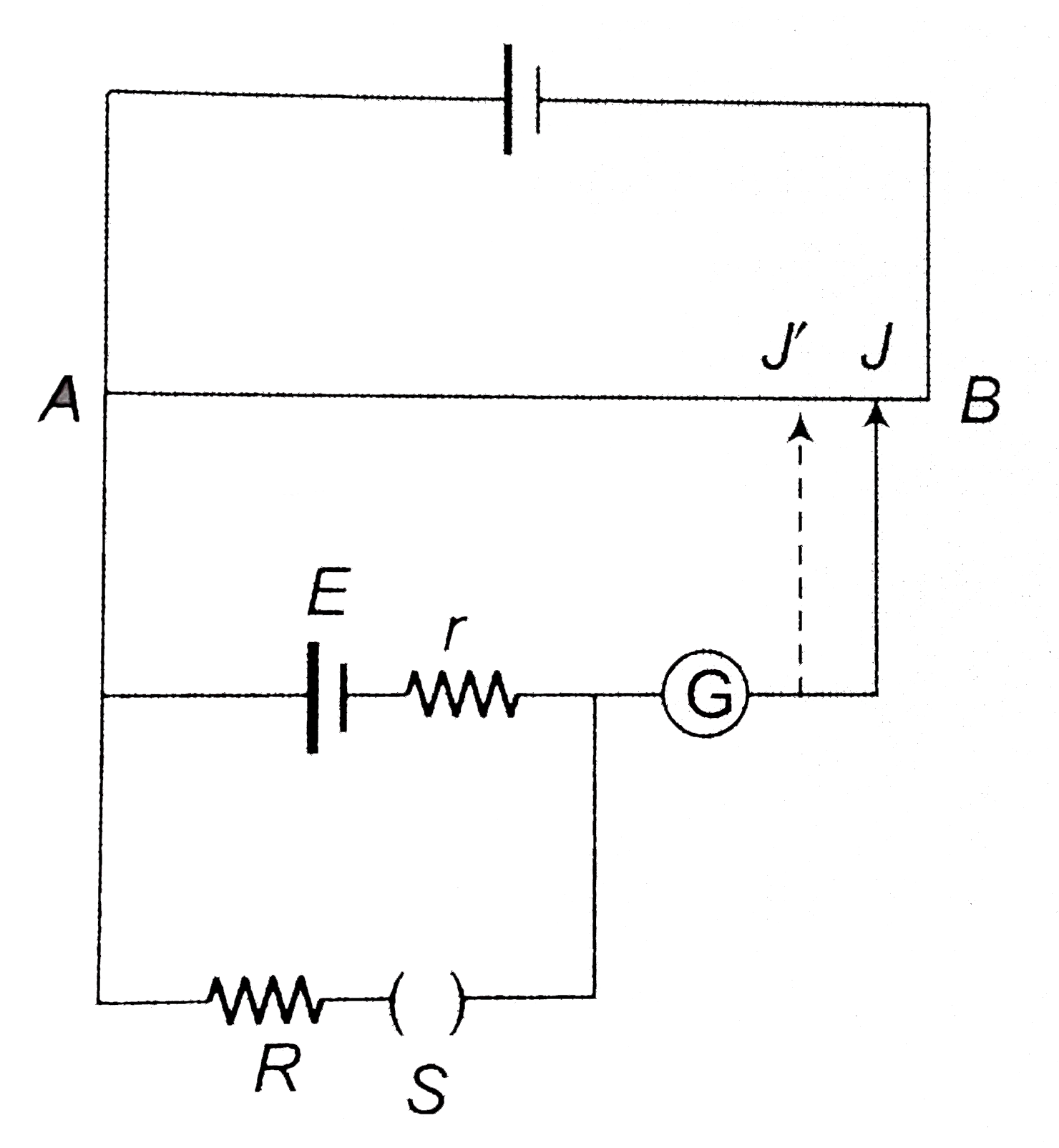In potentiometer experiment to determine internal resistance of the cell, balance point has been obtained in fourth wire. It can be shifted to wire by
decreasing the current due to auxiliary battery
inceasing the current due to auxiliary battery
putting a suitable resistance in series to the cell
putting a shunt resistance in parallel to the cell
The correct Answer is:A
Step by step video, text & image solution for In potentiometer experiment to determine internal resistance of the cell, balance point has been obtained in fourth wire. It can be shifted to 5^("th") wire by by Physics experts to help you in doubts & scoring excellent marks in Class 12 exams.
Updated on:21/07/2023Topper's Solved these Questions
- CURRENT ELECTRICITYBOOK - NIKITA PUBLICATIONCHAPTER - CURRENT ELECTRICITYEXERCISE - Multiple Choice Questions
314 Videos
- COMMUNICATION SYSTEMSBOOK - NIKITA PUBLICATIONCHAPTER - COMMUNICATION SYSTEMSEXERCISE - Multiple Choice Questions (Examples for Practice)
8 Videos
- ELASTICITYBOOK - NIKITA PUBLICATIONCHAPTER - ELASTICITYEXERCISE - MCQ
314 Videos
Similar Questions
Consider the potentiometer circuit for determining the internal resistance of a cell. When switch S is open, the balance point is found to be at 75cm os the wire. When switch S is closed and value of R is 4Ω, the balance points shifts to 60cm. find the internal resistance of cell.
 .
.
View SolutionA potentiometer is being used to determine the internal resistance of a primary cell. The balance point for the cell in an open circuit is at 76.3 cm. when the cell sends a current in a resistor of 9.5Ω, the balance point shifts to 64.8cm. Find the internal resistance of the cell.
View Solution
Knowledge Check
A 2.0V potentiometer is used to determine the internal resistance ofa I.SY cell. The balance point of the cell in the open circuit is obtained at 75cm. When· a resistor of 10Ω is connected across the cell, the balance point shifts to 60cm. The internal resistance of the cell is:
A1.5ΩB2.5ΩC3.5ΩD4.5ΩIn a potentiometer of 10 wires, the balance point is obtained on the 7th wire. To shift the balance point to 9th wire, we should
Adecrease resistance in the main circuitBincrease resistance in the main circuitCdecrease resistance in series with the cell whose emf is to be measuredDincrease resistance in series with the cell whose emf is to be determinedIn an experiment to find the internal resistance of a cell by a potentiometer, a balance was obtained for 50 cm length of the potentiometer wire, with a cell of e.m.f. 2V. When the cell was shunted by a resistance of 2Ω, the balancing length of the potentiometer wire was 40 cm. What was the internal resistance of the cell ?
A0.25ΩB0.75ΩC0.5ΩD1Ω
Fig. shows a 2.0 V potentiometer used for the determination of internal resistance of a 1.5 V cell. The balance point of the cell in open circuit is 76.3 cm. When a resistor of 9.5Ω is used in the external circuit of the cell, the balance point shifts to 64.8 cm length of the potentiometer wire. Determine the internal resistance of the cell.

View Solution3V poteniometer used for the determination of internal resistance of a 2.4V cell. The balanced point of the cell in open circuit is 75.8cm. When a resistor of 10.2Ω is used in the external circuit of the cell the balance point shifts to 68.3cm length of the potentiometer wire. The internal resistance of the cell is

View SolutionIn an experiment to determine the internal resistance of a cell with potentiometer, the balancing length is 165 cm. When a resistance of 5 ohm is joined in parallel with the cell the balancing length is 150 cm. The internal resistance of cell is
View SolutionIn a potentiometer of 5 wires, the balance point is obtained on the 3rd wire. To shift the balance point to the 4th wire,
View SolutionIn a potentiometer of ten wires each of 1m, the balance point is obtained on the sixth wire. To shift the balance point to eighth wire, we should
View Solution
